Growth and Optical Properties of Ga2O3 Layers of Different Crystalline Modifications
Abstract
:1. Introduction
2. Materials and Methods
3. Results
3.1. Stable Phase with Monoclinic Structure
3.2. Metastable Phase Ga2O3 with Orthorhombic Structure
3.3. Metastable Phase of Ga2O3 with Trigonal Structure
4. Discussion
5. Conclusions
Author Contributions
Funding
Institutional Review Board Statement
Informed Consent Statement
Data Availability Statement
Acknowledgments
Conflicts of Interest
References
- Tsao, J.Y.; Chowdhury, S.; Hollis, M.A.; Jena, D.; Johnson, N.M.; Jones, K.A.; Kaplar, R.J.; Rajan, S.; Van de Walle, C.G.; Bellotti, E.; et al. Ultrawide-bandgap semiconductors: Research opportunities and challenges. Adv. Electron. Mater. 2018, 4, 1600501. [Google Scholar] [CrossRef] [Green Version]
- Stepanov, S.I.; Nikolaev, V.; Bougrov, V.E.; Romanov, A. Gallium oxide: Properties and applications—A review. Rev. Adv. Mater. Sci. 2016, 44, 63–86. [Google Scholar]
- Jamwal, N.S.; Kiani, A. Gallium oxide nanostructures: A review of synthesis, properties and applications. Nanomaterials 2022, 12, 2061. [Google Scholar] [CrossRef] [PubMed]
- Pearton, S.J.; Yang, J.; Cary, P.H.; Ren, F.; Kim, J.; Tadjer, M.J.; Mastro, M.A. A review of Ga2O3 materials, processing, and devices. Appl. Phys. Rev. 2018, 5, 011301. [Google Scholar] [CrossRef] [Green Version]
- Furthmüller, J.; Bechstedt, F. Quasiparticle bands and spectra of Ga2O3 polymorphs. Phys. Rev. B 2016, 93, 115204. [Google Scholar] [CrossRef]
- Kranert, C.; Sturm, C.; Schmidt-Grund, R.; Grundmann, M. Raman tensor elements of β-Ga2O3. Sci. Rep. 2016, 6, 35964. [Google Scholar] [CrossRef] [Green Version]
- Osipov, A.V.; Grashchenko, A.S.; Kukushkin, S.A.; Nikolaev, V.I.; Osipova, E.V.; Pechnikov, A.I.; Soshnikov, I.P. Structural and elastoplastic properties of β—Ga2O3 films grown on hybrid SiC/Si substrates. Contin. Mech. Thermodyn. 2018, 30, 1059–1068. [Google Scholar] [CrossRef]
- Tse, G. Evaluation of structural, electronic, optical, elastic, and mechanical properties of triclinic Sn-doped Ga2O3 using density functional theory. Comput. Condens. Matter 2022, 30, e00641. [Google Scholar] [CrossRef]
- Usseinov, A.; Koishybayeva, Z.; Platonenko, A.; Pankratov, V.; Suchikova, Y.; Akilbekov, A.; Zdorovets, M.; Purans, J.; Popov, A.I. Vacancy defects in Ga2O3: First-principles calculations of electronic structure. Materials 2021, 14, 7384. [Google Scholar] [CrossRef]
- Usseinov, A.; Platonenko, A.; Koishybayeva, Z.; Akilbekov, A.; Zdorovets, M.; Popov, A.I. Pair vacancy defects in β-Ga2O3 crystal: Ab initio study. Opt. Mater. X 2022, 16, 100200. [Google Scholar] [CrossRef]
- Nomura, K.; Goto, K.; Togashi, R.; Murakami, H.; Kumagai, Y.; Kuramata, A.; Yamakoshi, S.; Koukitu, A. Thermodynamic study of β-Ga2O3 growth by halide vapor phase epitaxy. J. Cryst. Growth 2014, 405, 19–22. [Google Scholar] [CrossRef]
- Kukushkin, S.A.; Osipov, A.V. Theory and practice of SiC growth on Si and its applications to wide-gap semiconductor films. J. Phys. D Appl. Phys. 2014, 47, 313001. [Google Scholar] [CrossRef]
- Kukushkin, S.A.; Osipov, A.V. Epitaxial silicon carbide on silicon. method of coordinated substitution of atoms (a review). Russ. J. Gen. Chem. 2022, 92, 584–610. [Google Scholar] [CrossRef]
- Kukushkin, S.; Osipov, A. Dielectric function and magnetic moment of silicon carbide containing silicon vacancies. Materials 2022, 15, 4653. [Google Scholar] [CrossRef]
- Kukushkin, S.A.; Osipov, A.V. Quantum mechanical theory of epitaxial transformation of silicon to silicon carbide. J. Phys. D Appl. Phys. 2017, 50, 464006. [Google Scholar] [CrossRef] [Green Version]
- Kukushkin, S.A.; Osipov, A.V. Drift mechanism of mass transfer on heterogeneous reaction in crystalline silicon substrate. Phys. B Condens. Matter 2017, 512, 26–31. [Google Scholar] [CrossRef] [Green Version]
- Kukushkin, S.A.; Osipov, A.V. Spin polarization and magnetic moment in silicon carbide grown by the method of coordinated substitution of atoms. Materials 2021, 14, 5579. [Google Scholar] [CrossRef]
- Fujiwara, H.; Collins, R.W. Spectroscopic Ellipsometry for Photovoltaics; Springer: Berlin/Heidelberg, Germany, 2018; Volume 1. [Google Scholar]
- Giannozzi, P.; Andreussi, O.; Brumme, T.; Bunau, O.; Buongiorno Nardelli, M.; Calandra, M.; Car, R.; Cavazzoni, C.; Ceresoli, D.; Cococcioni, M.; et al. Advanced capabilities for materials modelling with Quantum ESPRESSO. J. Phys. Condens. Matter 2017, 29, 465901. [Google Scholar] [CrossRef] [Green Version]
- Perdew, J.P.; Ruzsinszky, A.; Csonka, G.I.; Vydrov, O.A.; Scuseria, G.E.; Constantin, L.A.; Zhou, X.; Burke, K. Restoring the density-gradient expansion for exchange in solids and surfaces. Phys. Rev. Lett. 2008, 100, 136406. [Google Scholar] [CrossRef] [Green Version]
- Fiedler, A.; Schewski, R.; Galazka, Z.; Irmscher, K. Static dielectric constant of β-Ga2O3 perpendicular to the principal planes (100), (010), and (001). ECS J. Solid State Sci. Technol. 2019, 8, Q3083. [Google Scholar] [CrossRef]
- Schubert, M.; Korlacki, R.; Knight, S.; Hofmann, T.; Schöche, S.; Darakchieva, V.; Janzén, E.; Monemar, B.; Gogova, D.; Thieu, Q.T.; et al. Anisotropy, phonon modes, and free charge carrier parameters in monoclinic β-gallium oxide single crystals. Phys. Rev. B 2016, 93, 125209. [Google Scholar] [CrossRef]
- Janzen, B.M.; Mazzolini, P.; Gillen, R.; Peltason, V.F.S.; Grote, L.P.; Maultzsch, J.; Fornari, R.; Bierwagen, O.; Wagner, M.R. Comprehensive Raman study of orthorhombic κ/ε-Ga2O3 and the impact of rotational domains. J. Mater. Chem. C 2021, 9, 14175–14189. [Google Scholar] [CrossRef]
- Bartók, A.P.; Yates, J.R. Regularized SCAN functional. J. Chem. Phys. 2019, 150, 161101. [Google Scholar] [CrossRef]
- Grümbel, J.; Goldhahn, R.; Jeon, D.-W.; Feneberg, M. Anharmonicity of lattice vibrations in thin film α-Ga2O3 investigated by temperature dependent Raman spectroscopy. Appl. Phys. Lett. 2022, 120, 022104. [Google Scholar] [CrossRef]
- Feneberg, M.; Nixdorf, J.; Neumann, M.D.; Esser, N.; Artús, L.; Cuscó, R.; Yamaguchi, T.; Goldhahn, R. Ordinary dielectric function of corundumlike alpha-Ga2O3 from 40 meV to 20 eV. Phys. Rev. Mater. 2018, 2, 044601. [Google Scholar] [CrossRef]
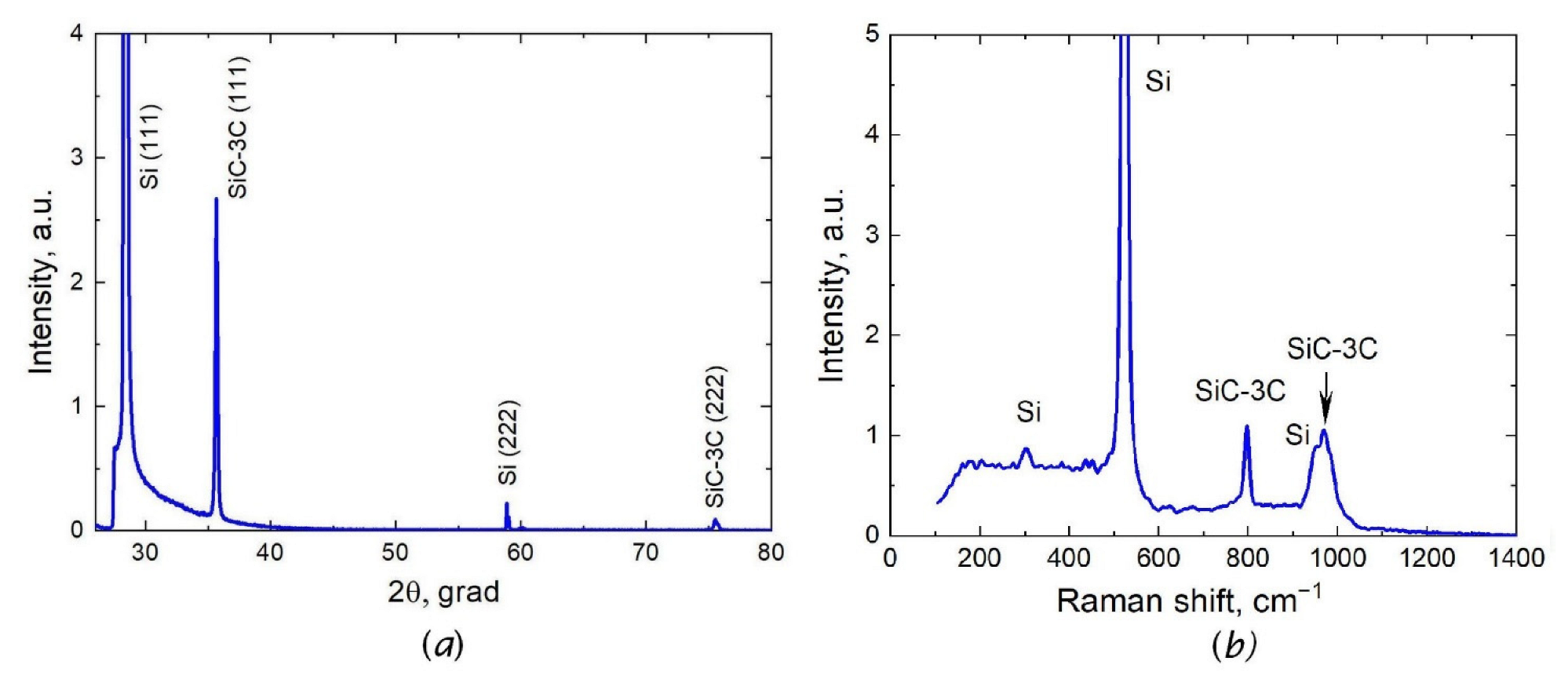
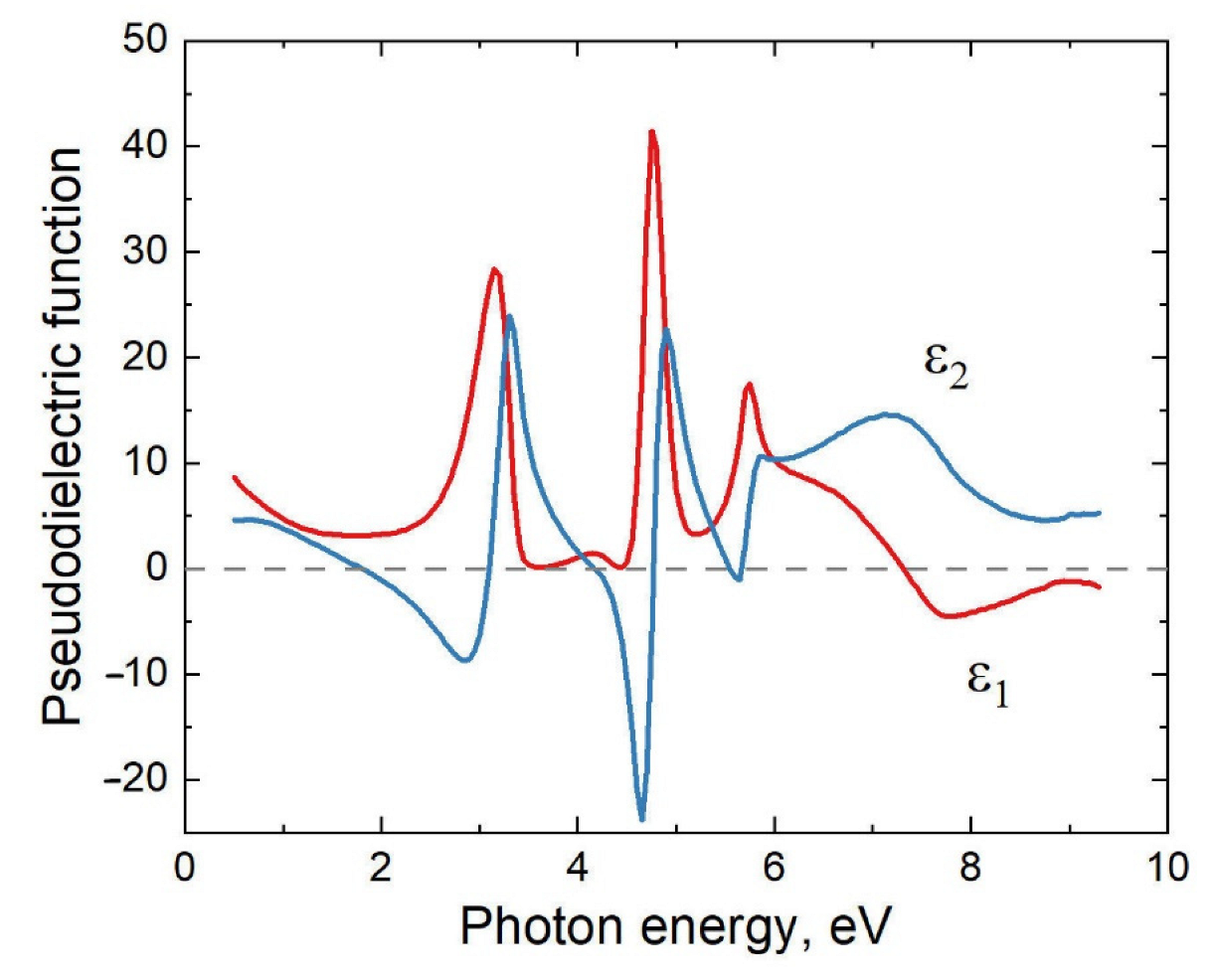

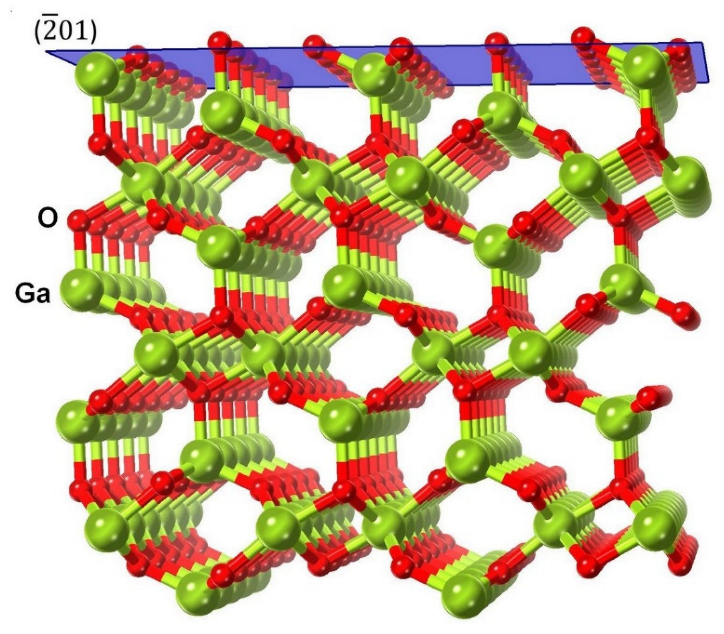
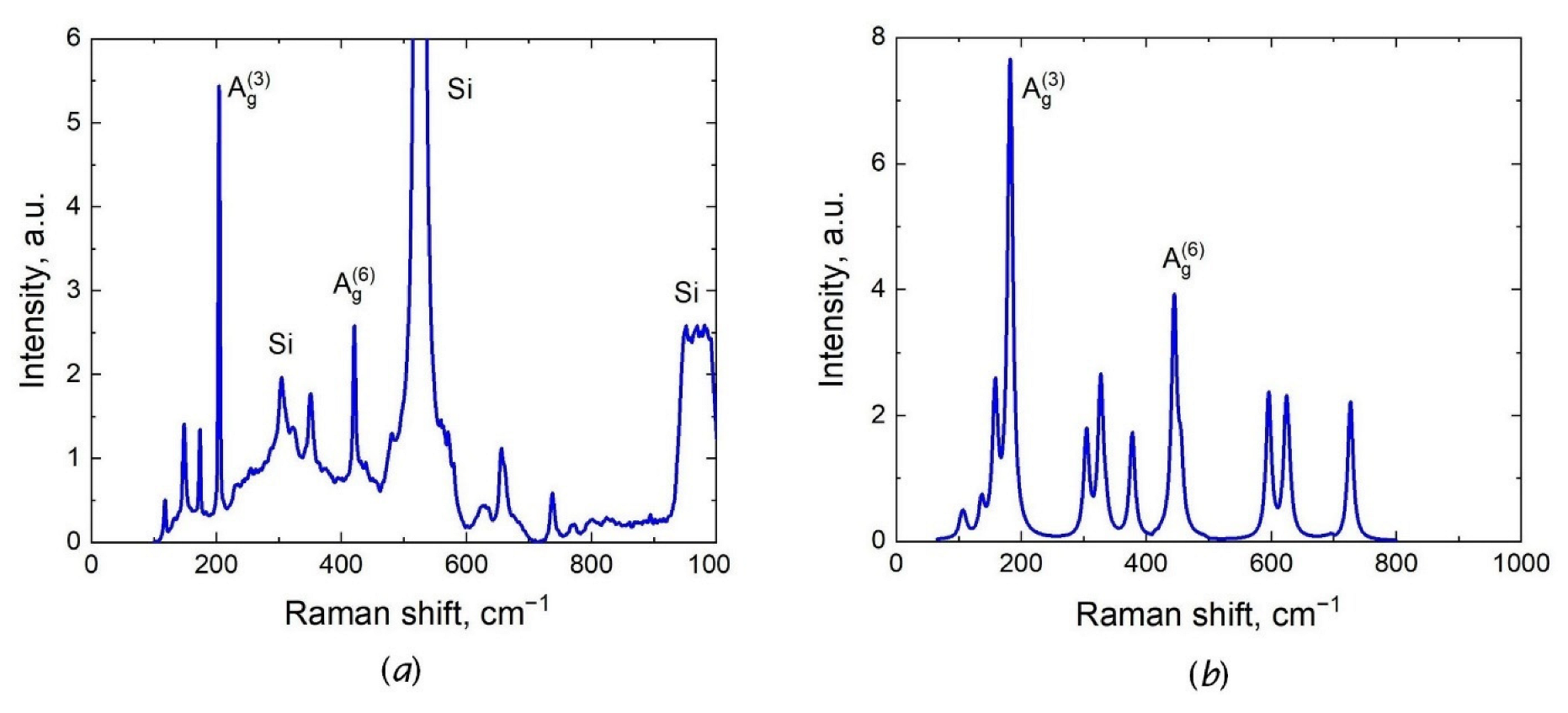
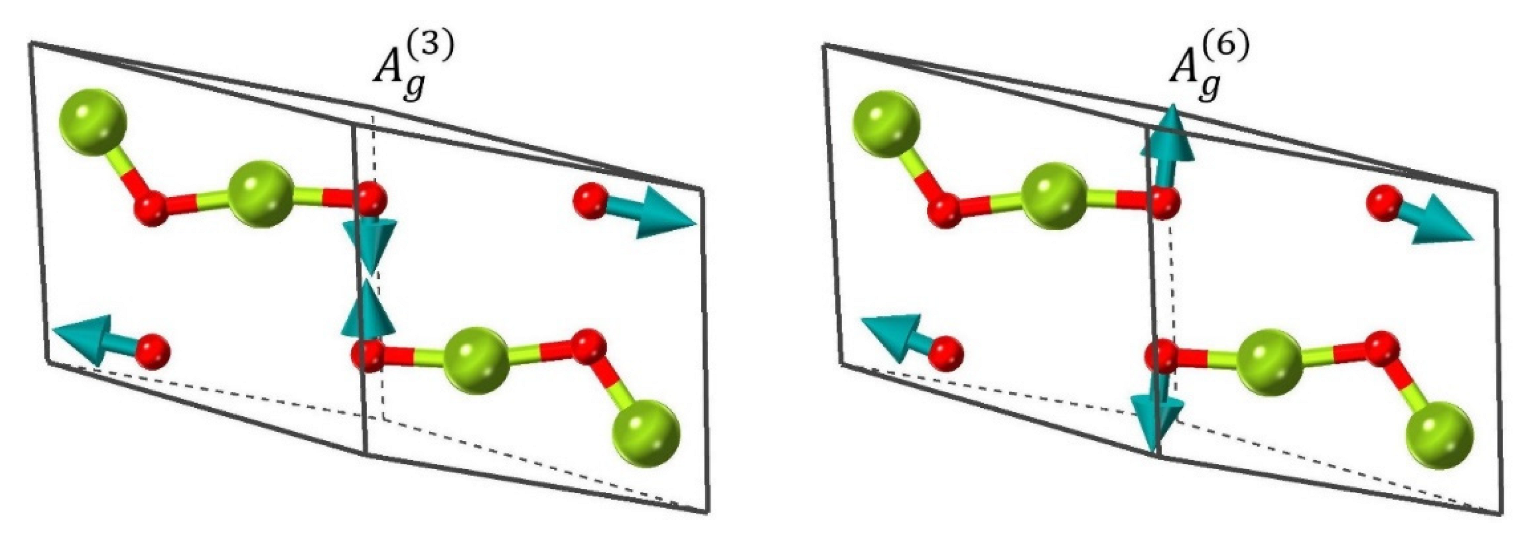



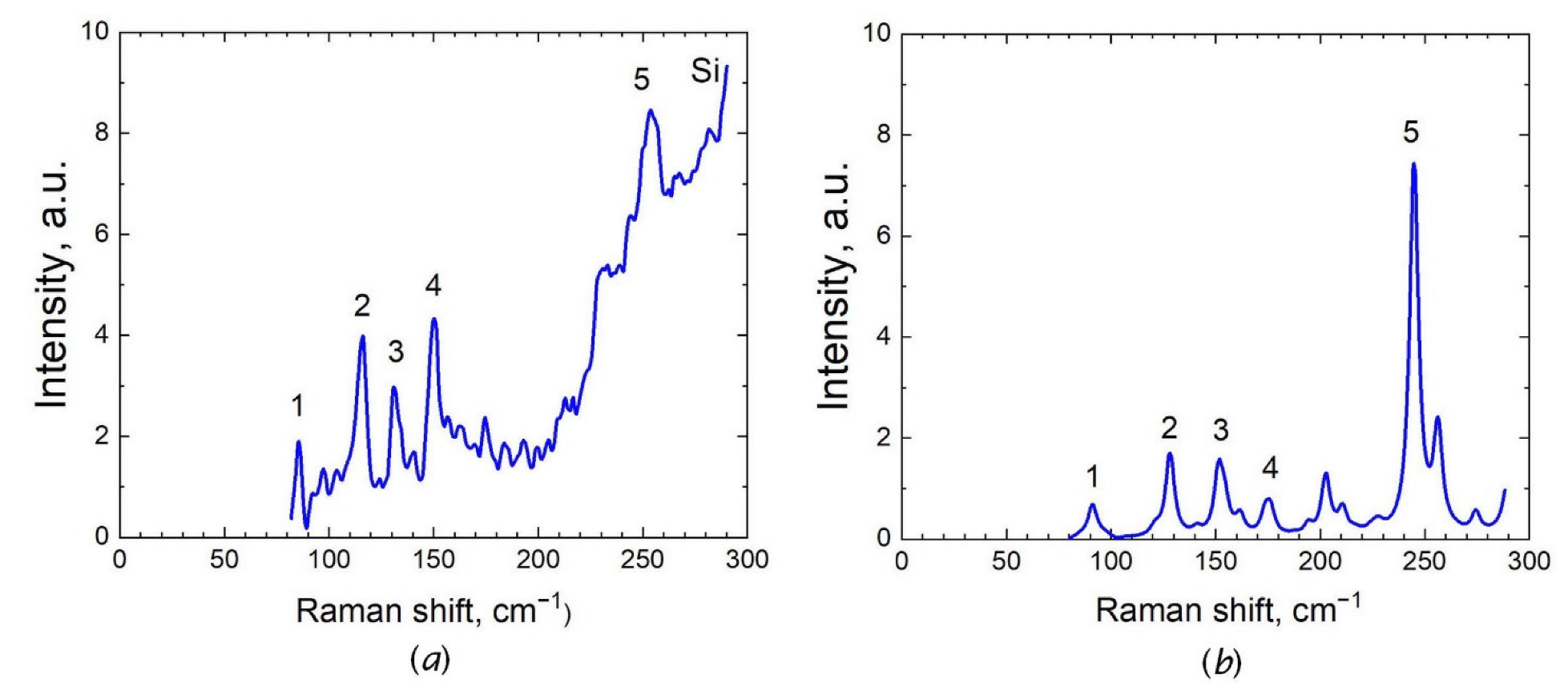
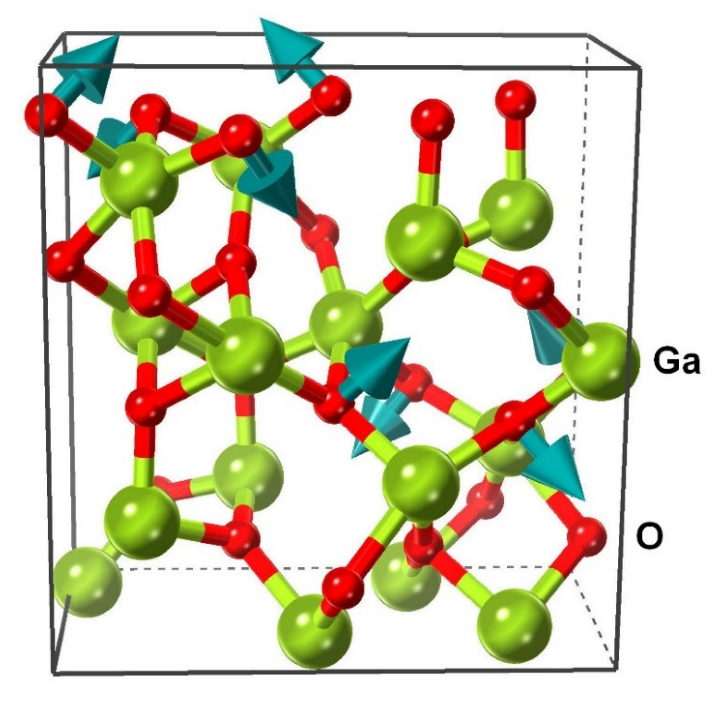
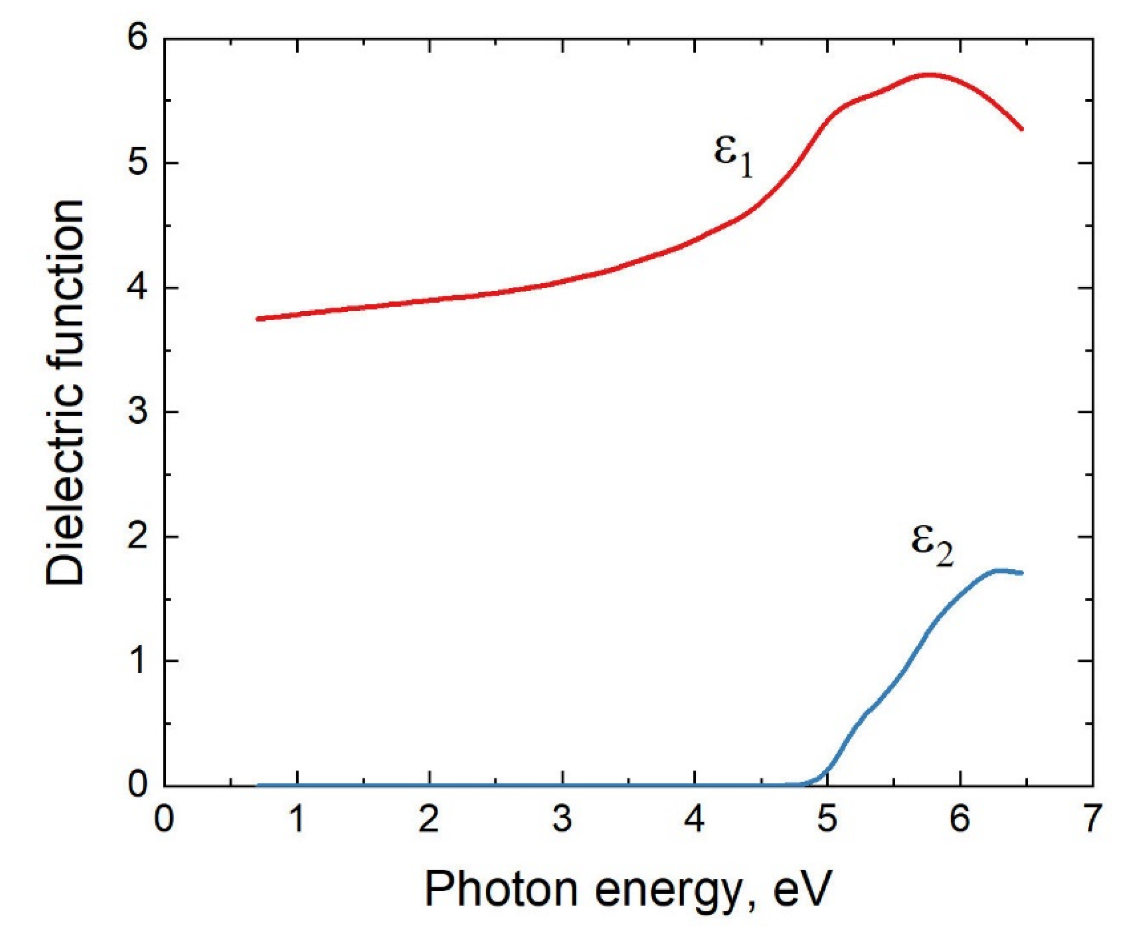
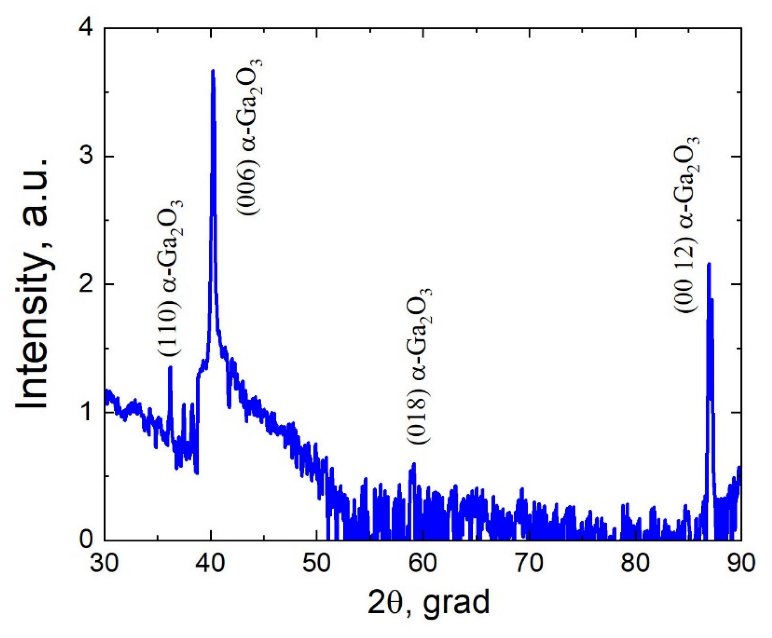
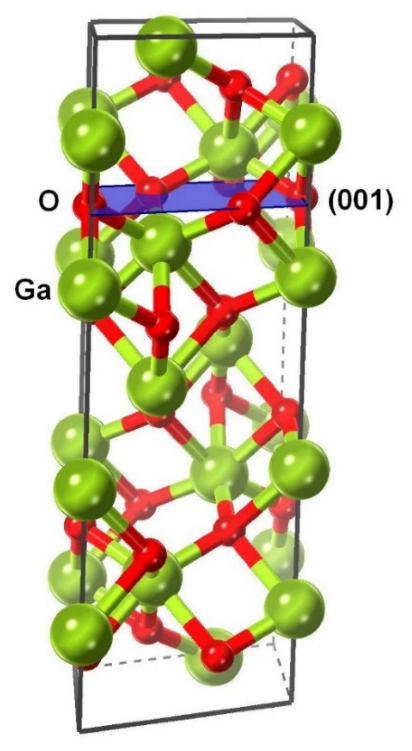

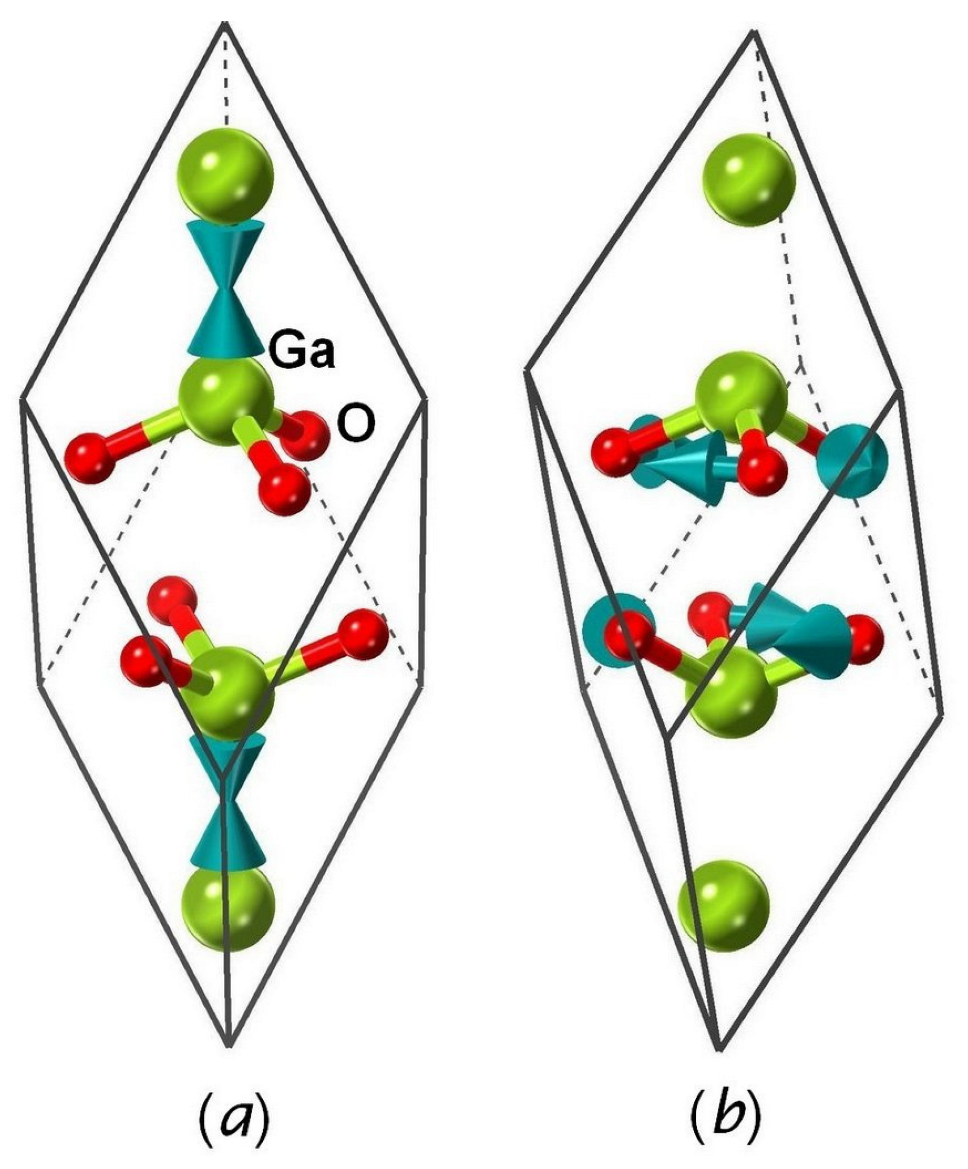
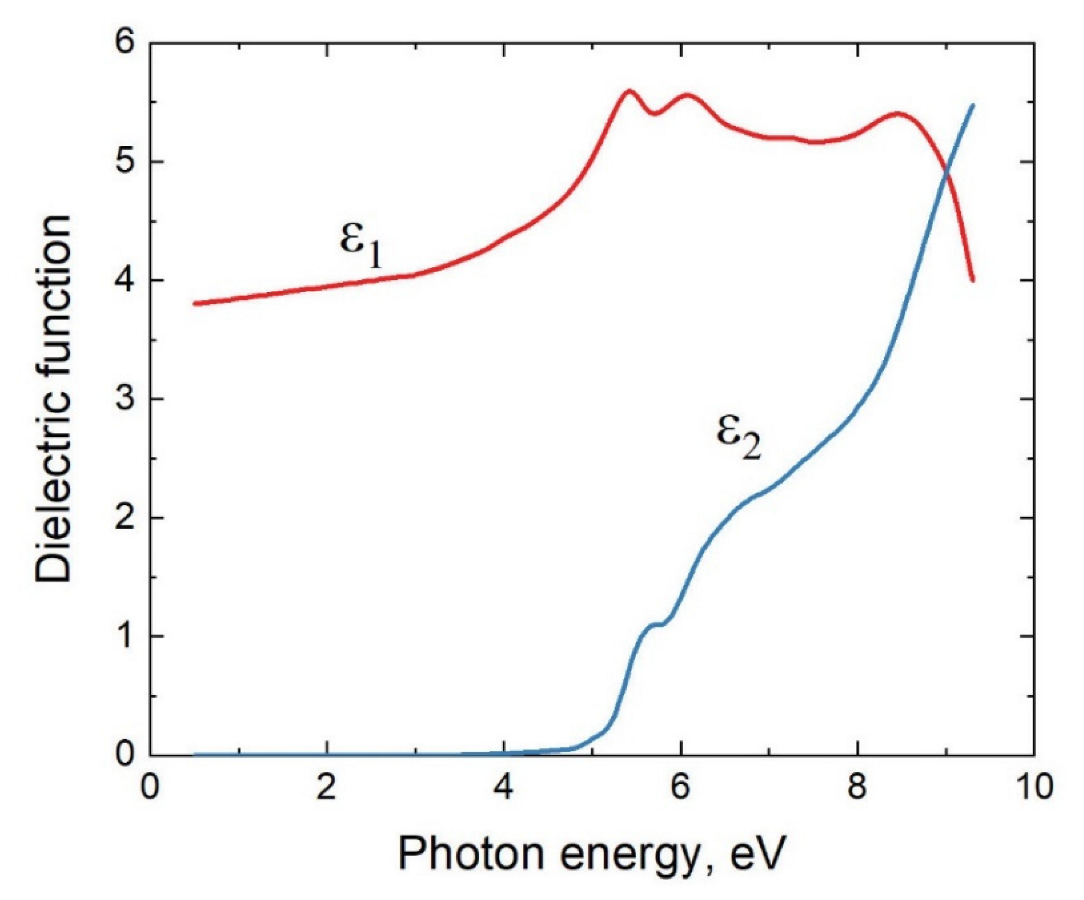
| Phase of Ga2O3 | Peaks | Freq., cm−1, Exp., This Work | Freq., cm−1, Theor., This Work | Freq., cm−1, Exp., [6,23,25] |
|---|---|---|---|---|
| -phase | A1g,1 | 221 | 216 | 217 |
| Eg,2 | 289 | 291 | 285 | |
| Eg,3 | 332 | 319 | 327 | |
| Eg,4 | 435 | 449 | 430 | |
| A1g,2 | 576 | 577 | 570 | |
| Eg,5 | 691 | 695 | 688 | |
| -phase | 117 | 108 | 115 | |
| 149 | 137 | 145 | ||
| 174 | 159 | 170 | ||
| 205 | 182 | 200 | ||
| 421 | 445 | 416 | ||
| -phase | 1 | 86 | 91 | 82 |
| 2 | 117 | 128 | 113 | |
| 3 | 131 | 152 | 128 | |
| 4 | 150 | 175 | 147 | |
| 5 | 253 | 245 | 249 |
Publisher’s Note: MDPI stays neutral with regard to jurisdictional claims in published maps and institutional affiliations. |
© 2022 by the authors. Licensee MDPI, Basel, Switzerland. This article is an open access article distributed under the terms and conditions of the Creative Commons Attribution (CC BY) license (https://creativecommons.org/licenses/by/4.0/).
Share and Cite
Osipov, A.V.; Sharofidinov, S.S.; Osipova, E.V.; Kandakov, A.V.; Ivanov, A.Y.; Kukushkin, S.A. Growth and Optical Properties of Ga2O3 Layers of Different Crystalline Modifications. Coatings 2022, 12, 1802. https://doi.org/10.3390/coatings12121802
Osipov AV, Sharofidinov SS, Osipova EV, Kandakov AV, Ivanov AY, Kukushkin SA. Growth and Optical Properties of Ga2O3 Layers of Different Crystalline Modifications. Coatings. 2022; 12(12):1802. https://doi.org/10.3390/coatings12121802
Chicago/Turabian StyleOsipov, Andrey V., Shukrillo Sh. Sharofidinov, Elena V. Osipova, Andrey V. Kandakov, Andrey Y. Ivanov, and Sergey A. Kukushkin. 2022. "Growth and Optical Properties of Ga2O3 Layers of Different Crystalline Modifications" Coatings 12, no. 12: 1802. https://doi.org/10.3390/coatings12121802
APA StyleOsipov, A. V., Sharofidinov, S. S., Osipova, E. V., Kandakov, A. V., Ivanov, A. Y., & Kukushkin, S. A. (2022). Growth and Optical Properties of Ga2O3 Layers of Different Crystalline Modifications. Coatings, 12(12), 1802. https://doi.org/10.3390/coatings12121802








